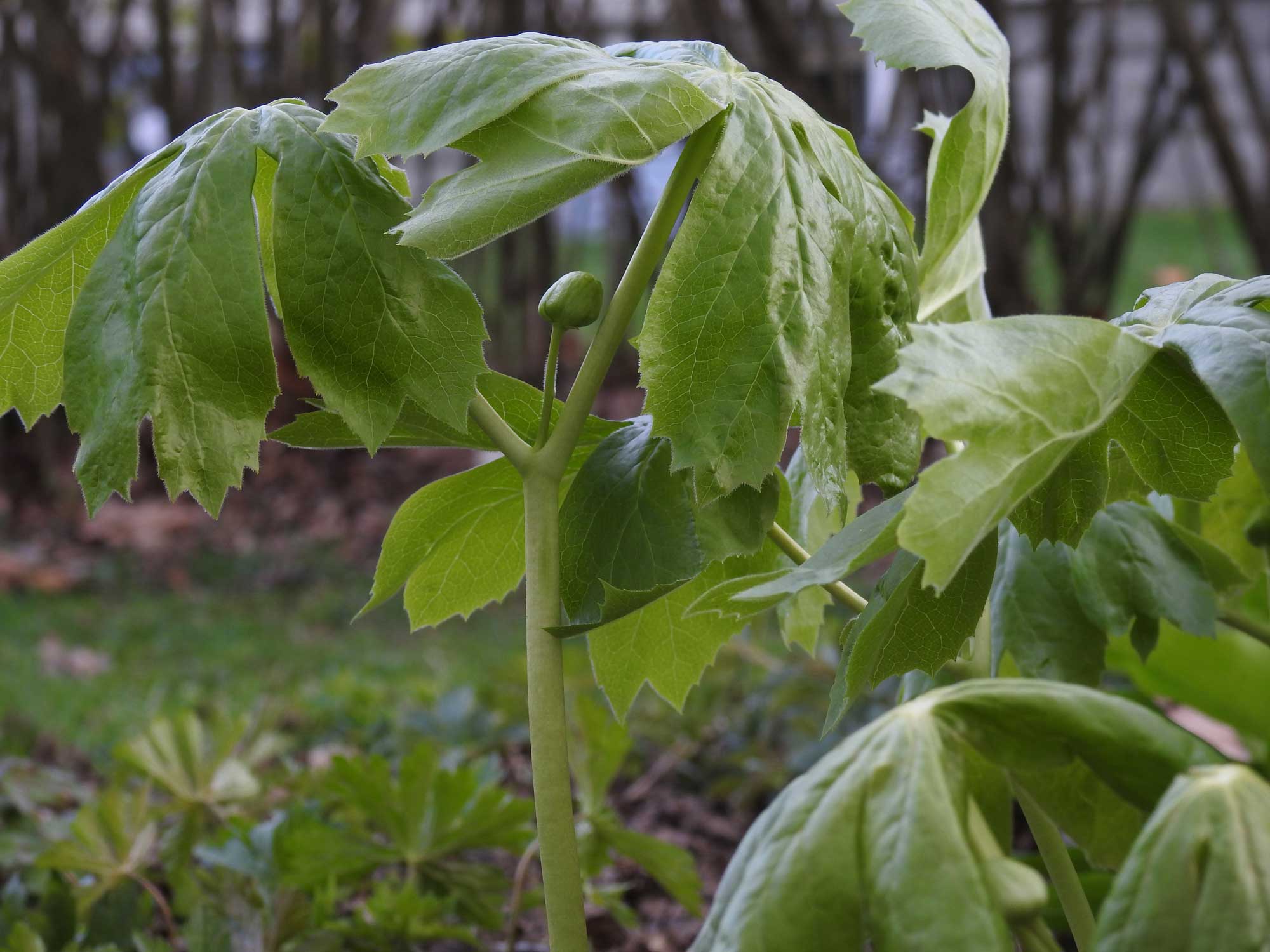Things we love: Those magical mayapples

About this series: While many people love nature, different people love different aspects of it. One may have a soft spot for flowers, while another gravitates toward a particular animal. And yet for others, it's all about the scenery. "Things We Love" explores those jaw-dropping parts of nature that one person finds particularly special. In this edition, Bob Bryerton, an interpretive naturalist at Plum Creek Nature Center, tells us why he loves mayapples.
Springtime in the woods can be hectic. There’s a flurry of activity as animals scurry to find food, establish territory, make nests, lay eggs or find a mate. Plants also seem to feel the urgency, and wildflowers are growing quickly to take advantage of the light on the forest floor before the leaves come out on the trees. Lots of flowers are all vying for attention, but the one I really look forward to seeing each spring is the mayapple.
The mayapple is a woodland plant native to Illinois and much of eastern North America. They grow all over Illinois in almost any wooded area and even some ditch lines along roads. They are medium-sized, about 1 foot to 1 1/2 feet tall. The plant usually grows in colonies, so a bunch of them come up together in one spot. It has a yellow and white flower that is tucked underneath overhanging leaves. After the flower is gone, a fleshy, oblong fruit forms. This “apple” ripens toward the end of summer, and box turtles and other wildlife may eat it. The leaves go dormant by midsummer, and the plant seems to fade away as other plants around them start to fill in.
I really like mayapples because they look just like little fairy umbrellas spread across the forest floor, creating a magical atmosphere. Closer inspection will show that the plants can either have a single stem and one large leaf with five to nine lobes or the stem can split into a Y shape and have two leaves with five or six lobes each. Only the plants with the split stem and two leaves have flowers and form the fruits, and the flowers and fruits form right in the split of the stem. Because of their unique look, mayapples are easy to identify, and this was one of the first woodland plants I became familiar with.
Mayapples show up early in the spring, along with other ephemeral flowers that start to pop out before the trees have leaves on them. They look so cool as they push out of the ground like folded up little umbrellas. They remain folded as they grow for few days. Once the stem is fully grown, the leaves unfold and spread out. Because the flower is under these large umbrella leaves, they can be difficult to see, which makes them kind of special. Only those that know to look for them get to see them.
While the leaves may stay around for a while, the flowers are short lived, so it is a real treat to find them. The flowers are about 1 1/2 inches across, and although they are somewhat showy, they don’t have nectar. They do have a lot of pollen and seem to be visited by bumblebees and other long-tongued bees. It is always fun when leading a group to have the kids look for the flowers and see if we can find the pollen and notice any insects trying to land on them.
Because they can be found all over Illinois and are so unique looking and easy to identify, have attractive hidden flowers, show up early in the spring and look so cool on the forest floor, mayapples are truly one of the things I love.
